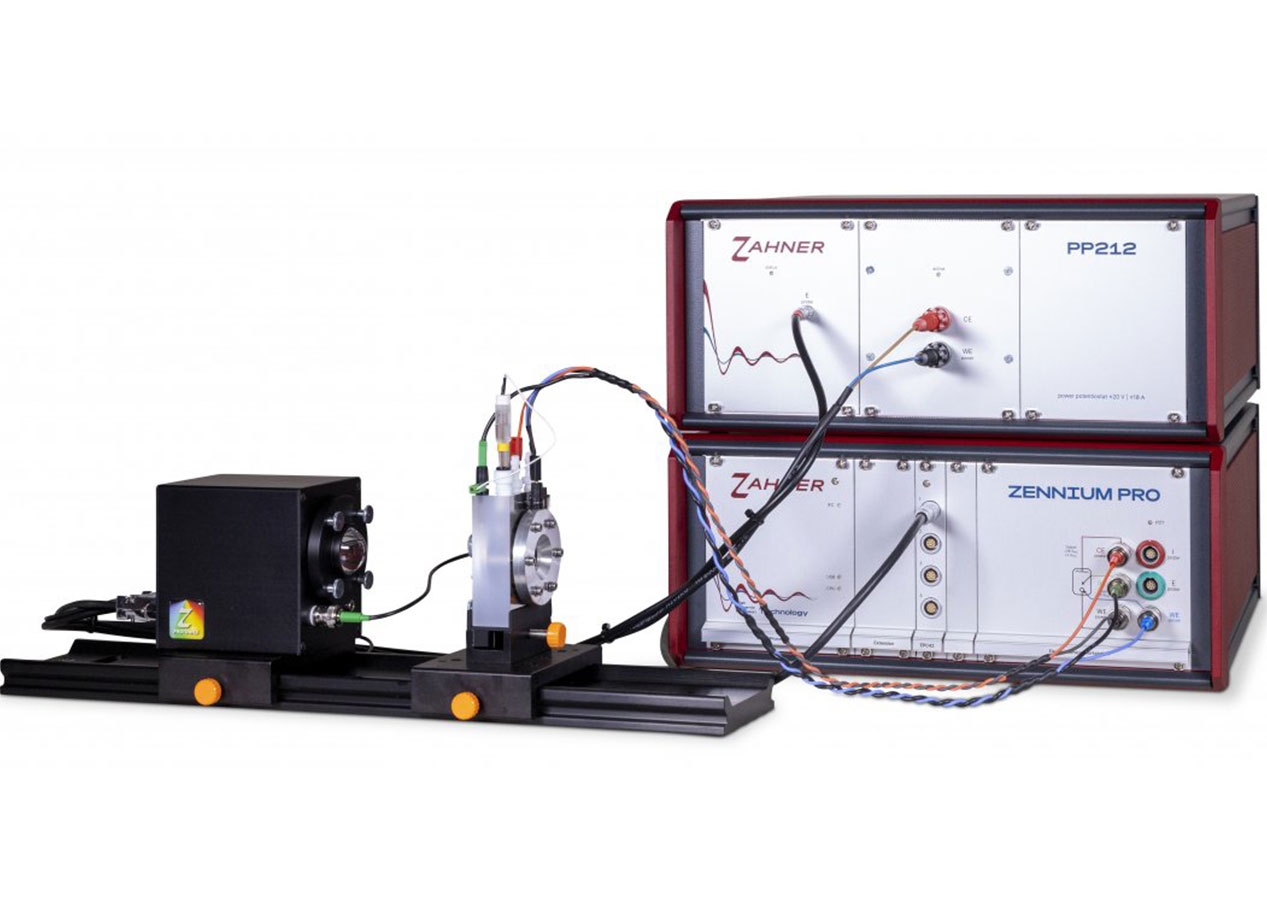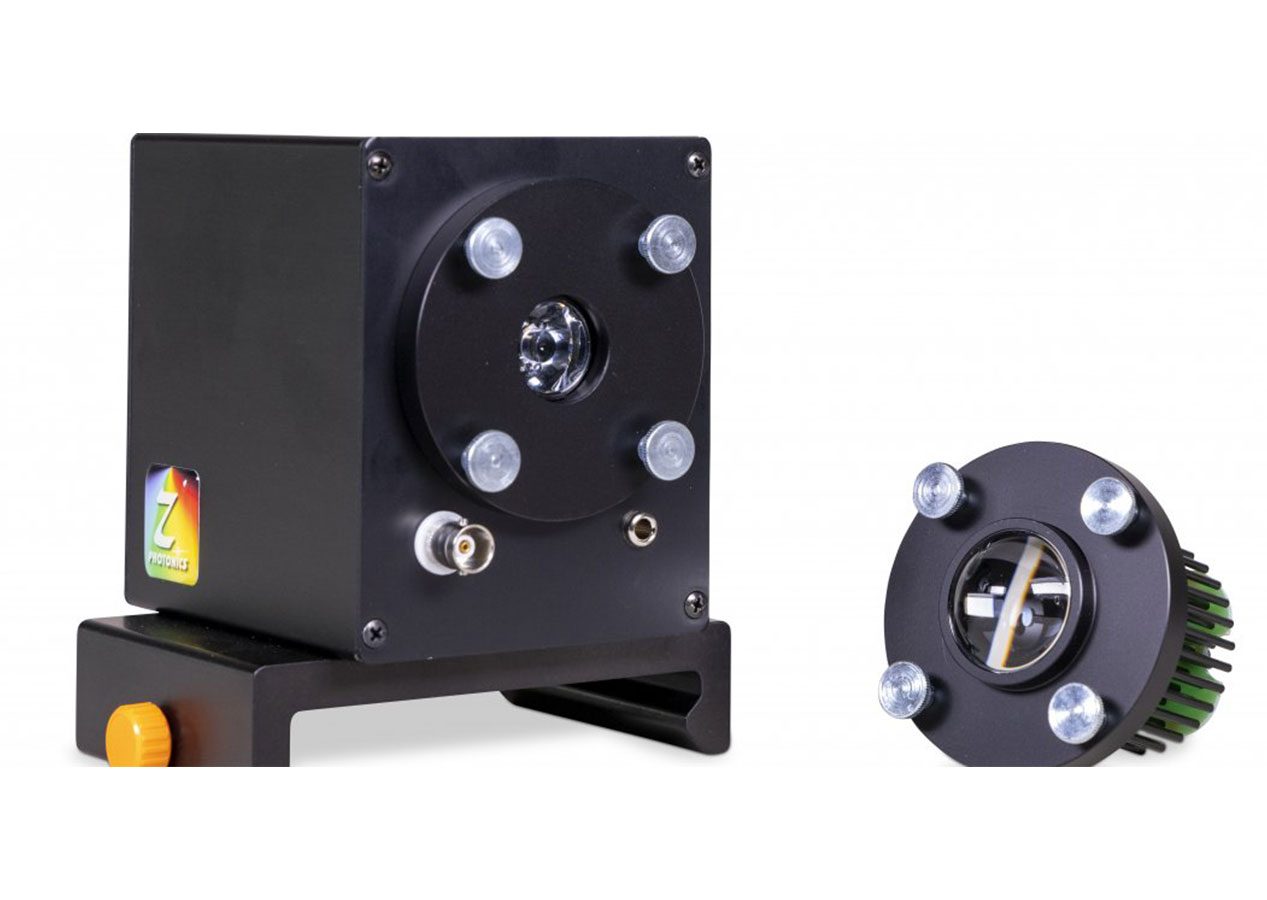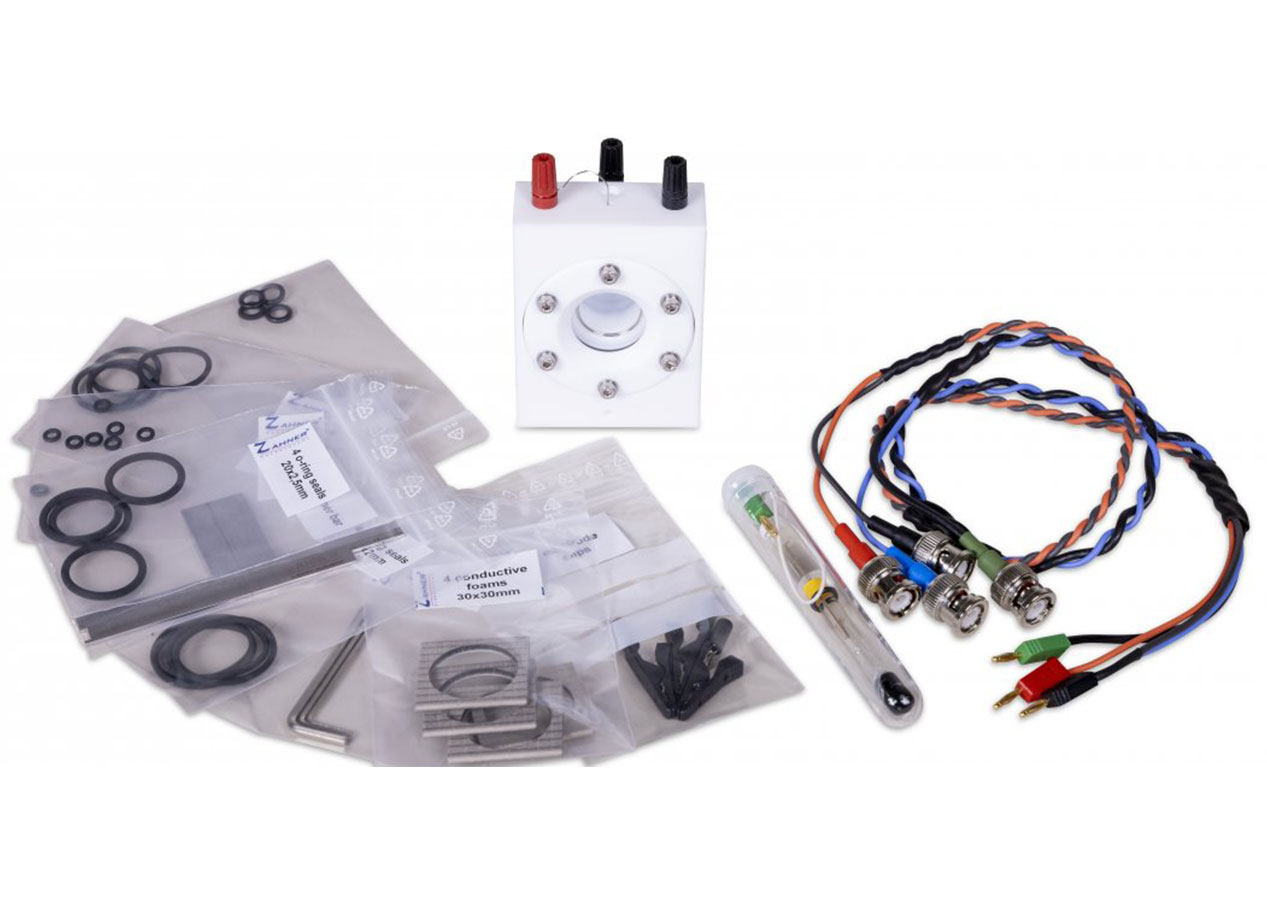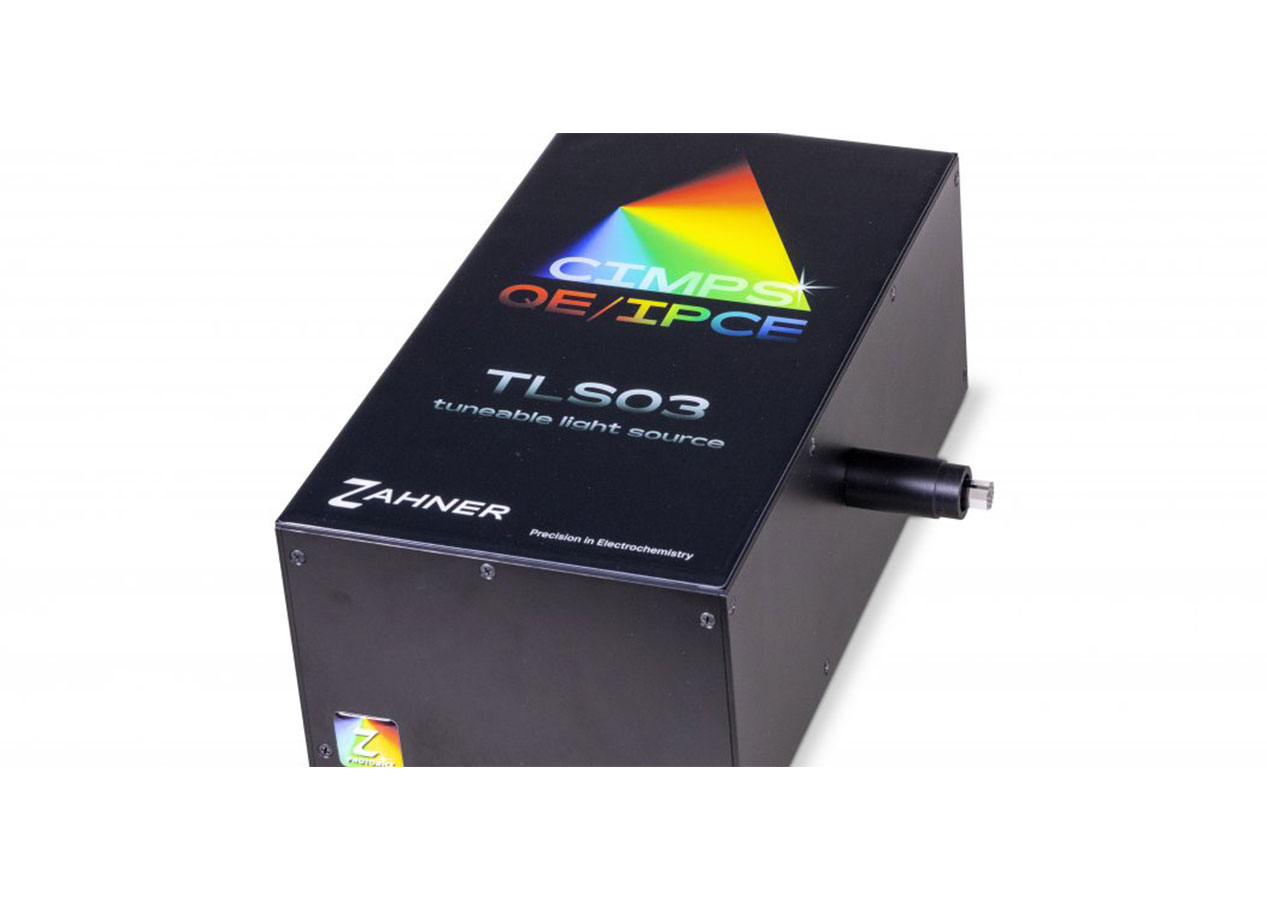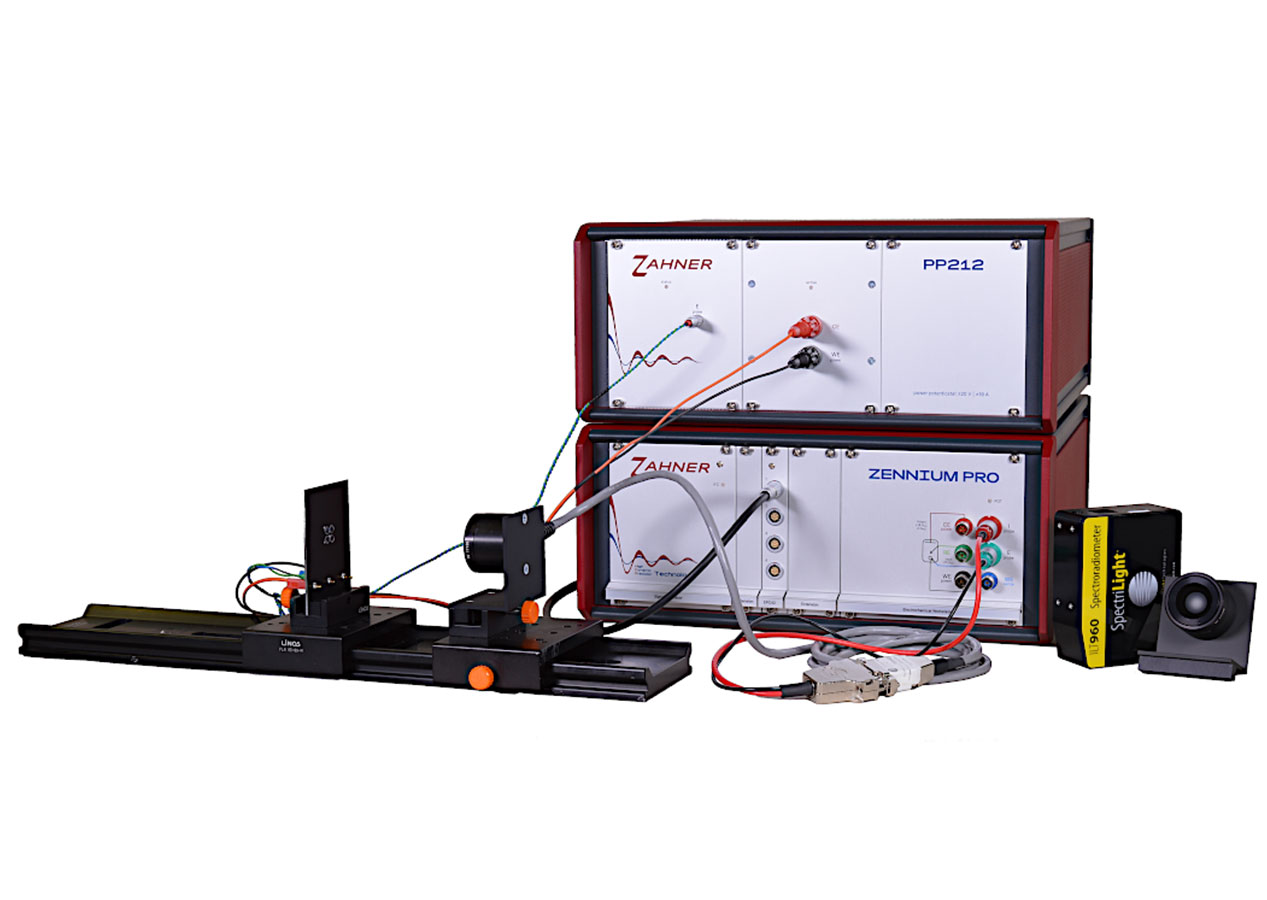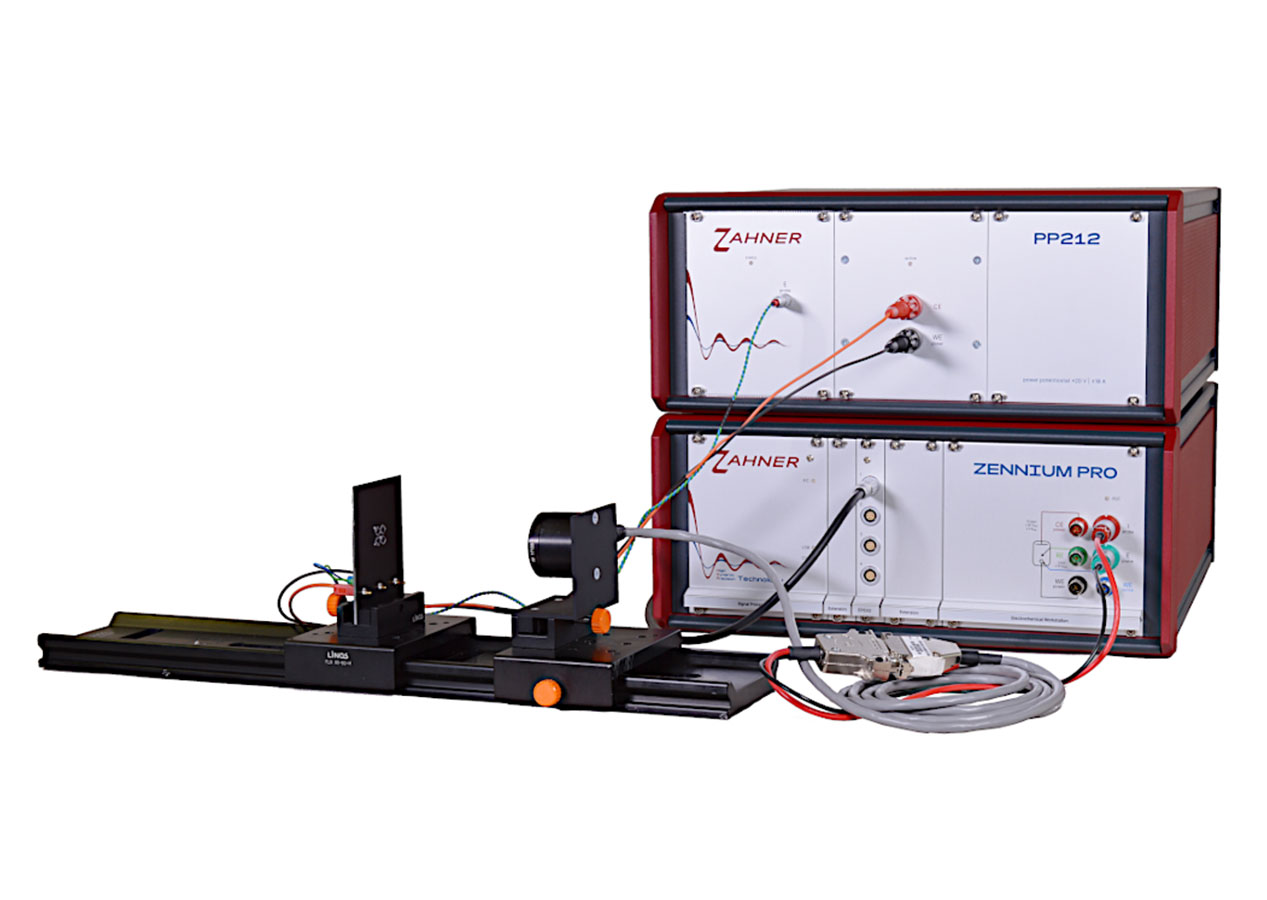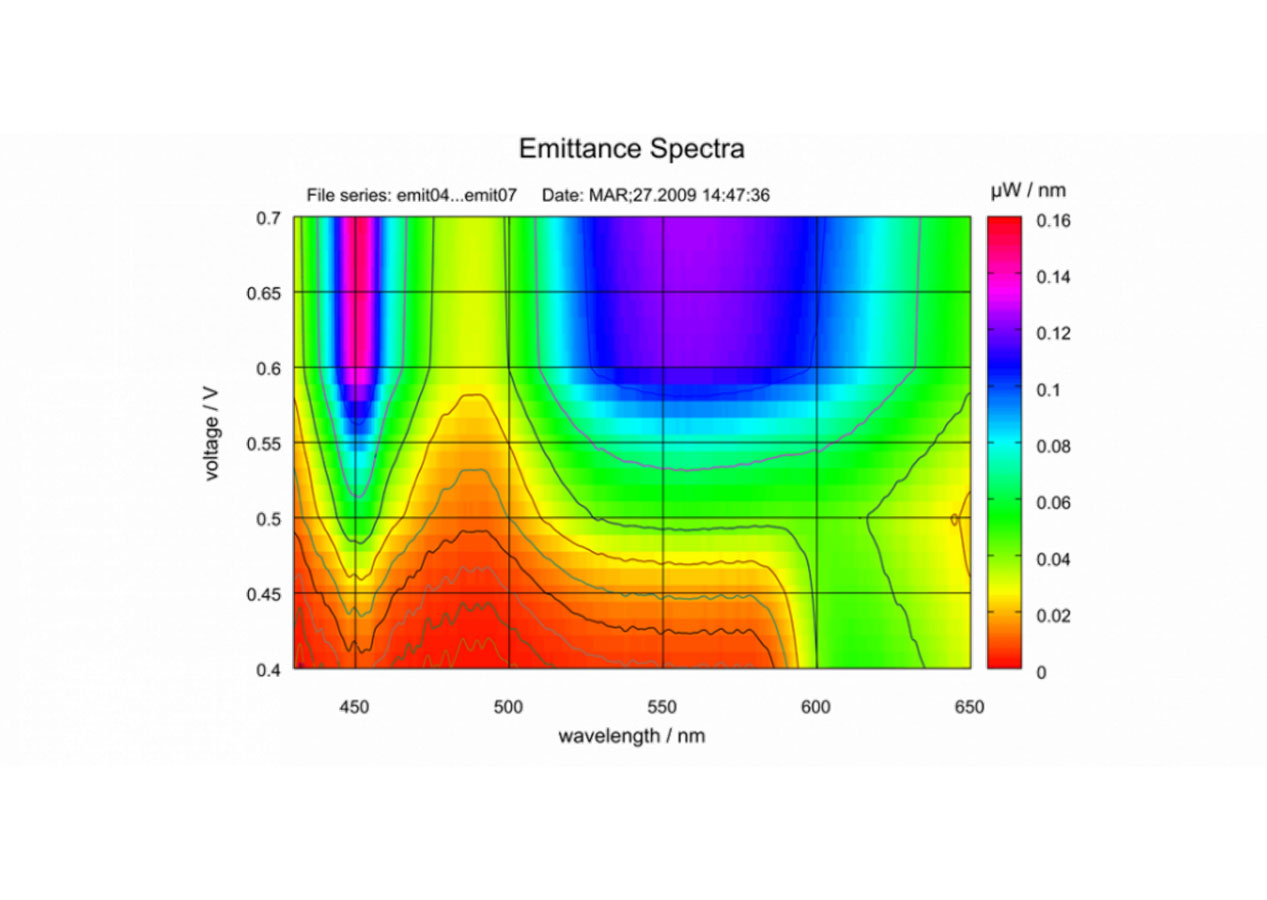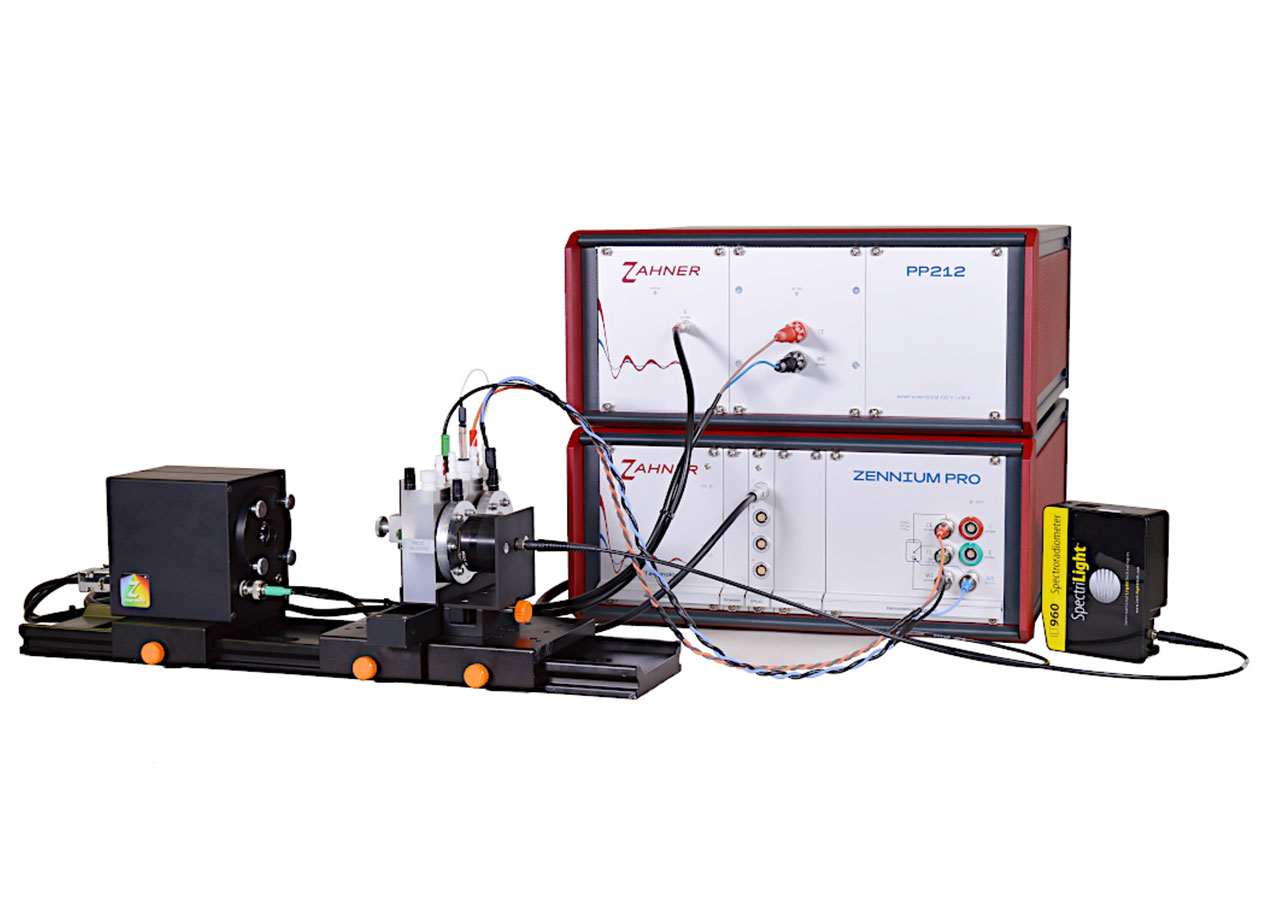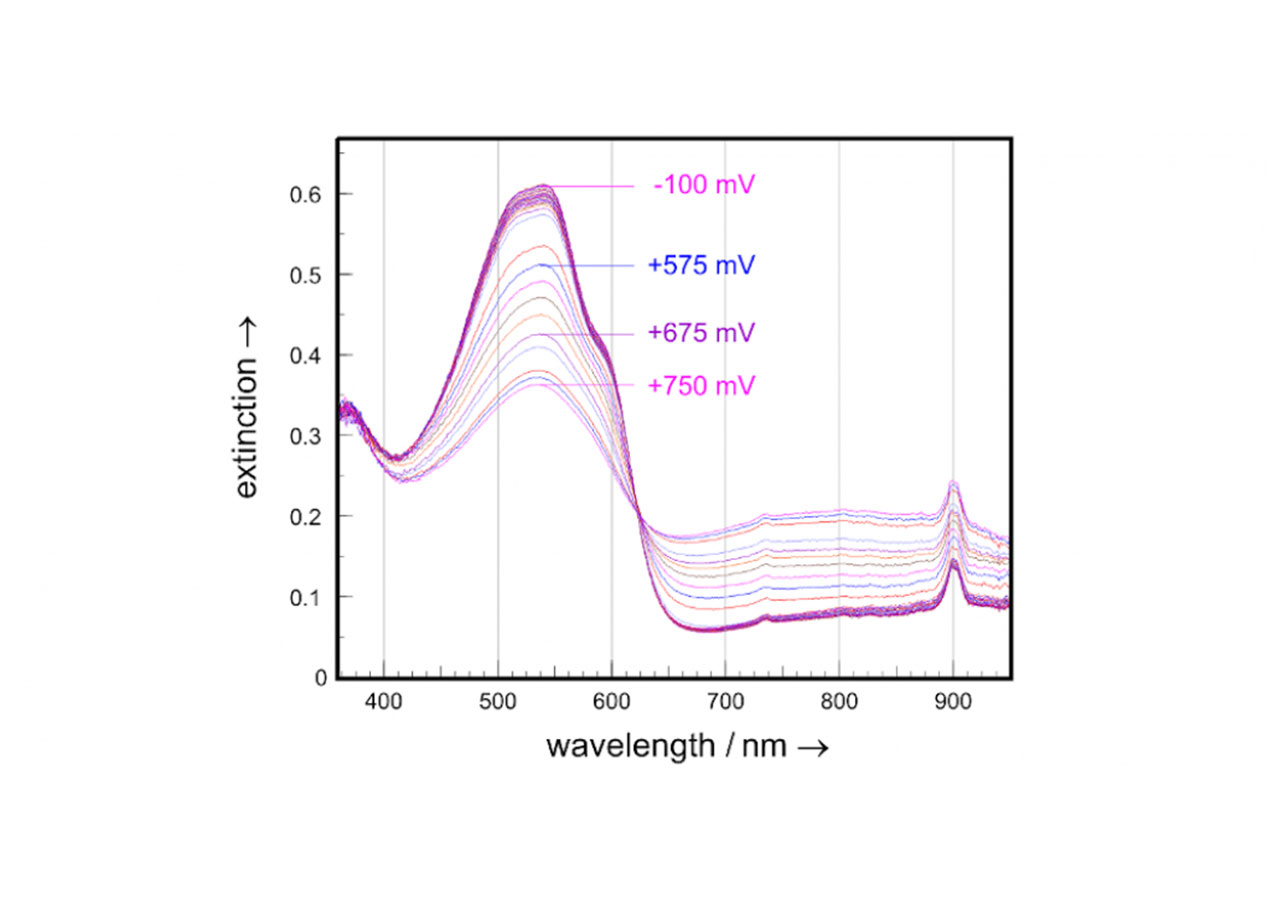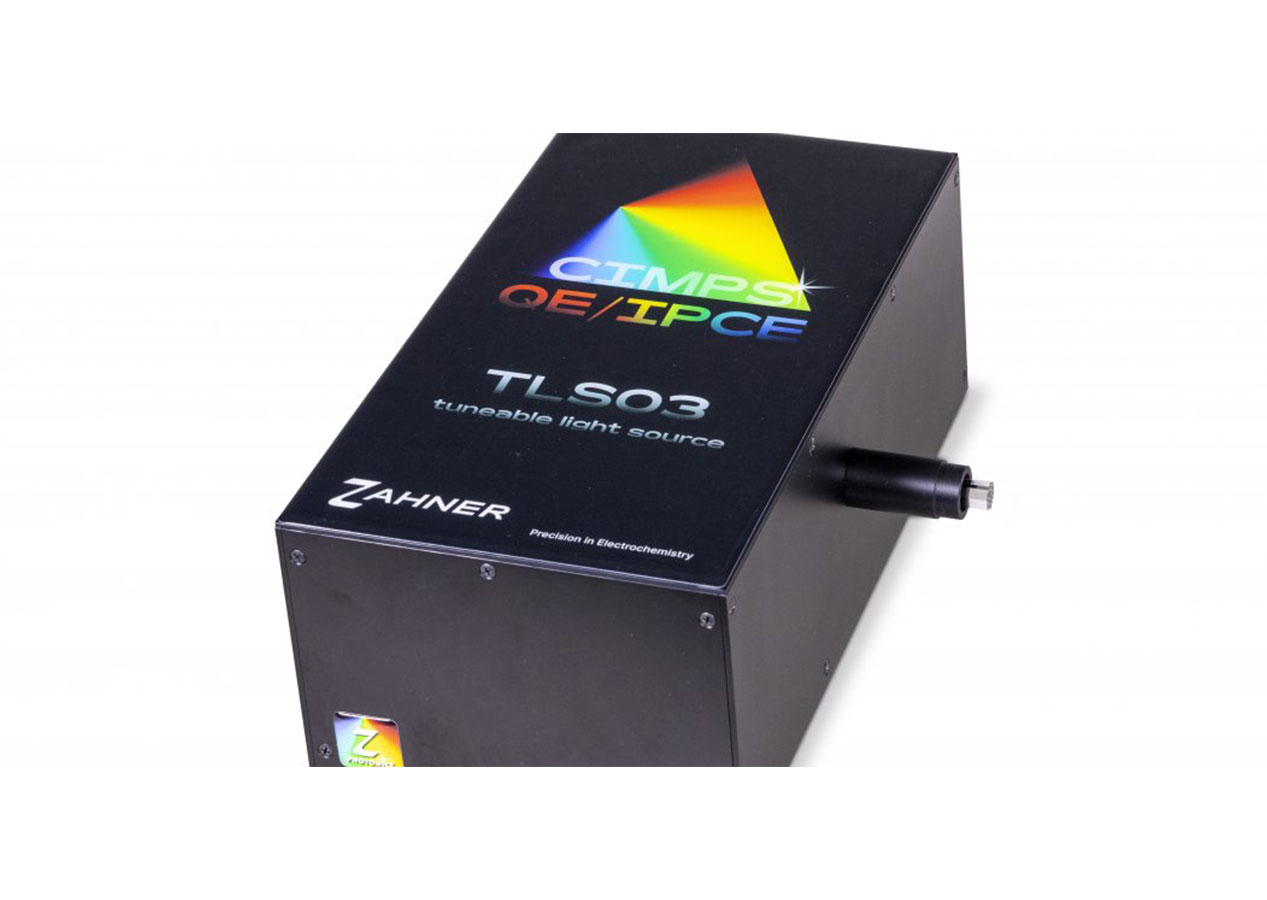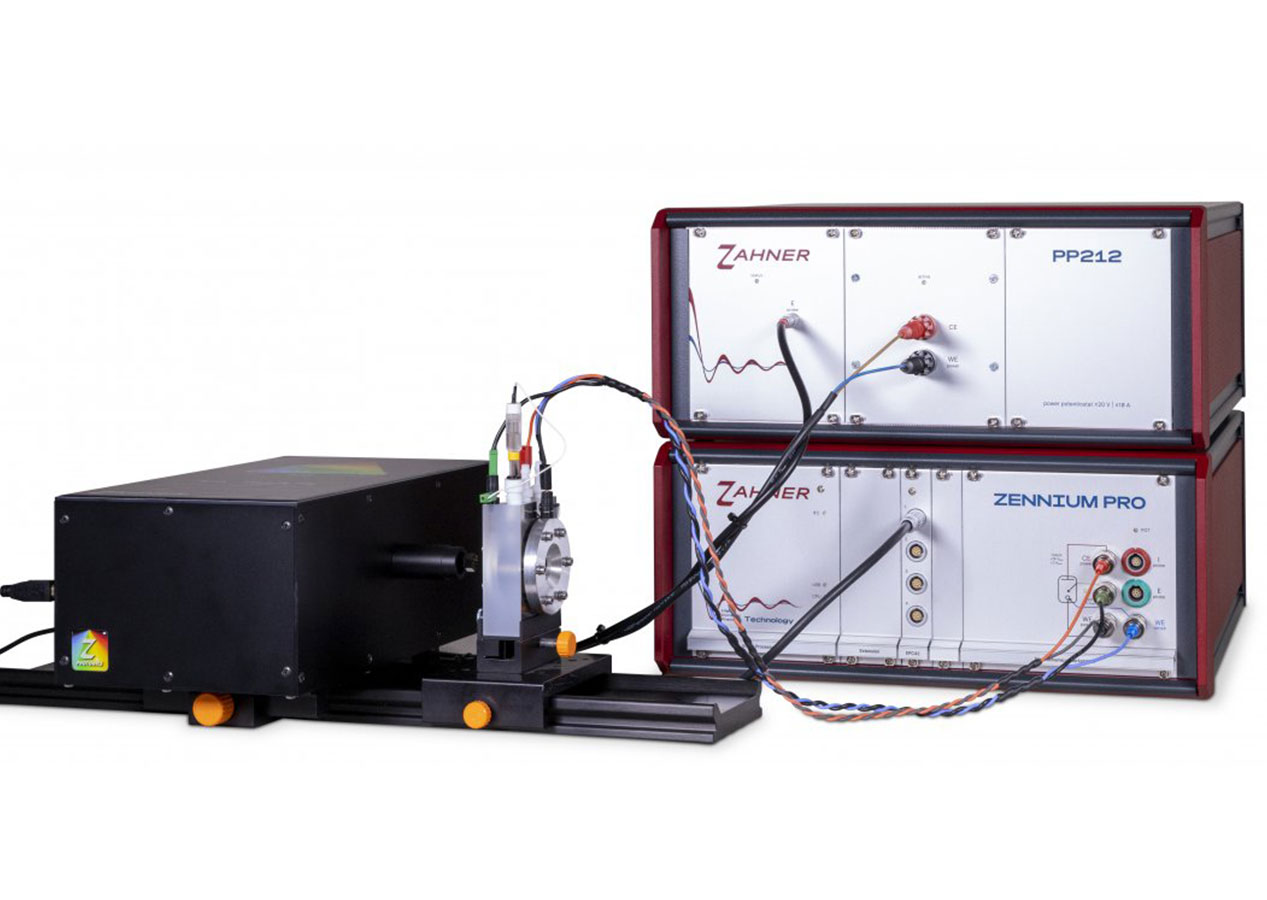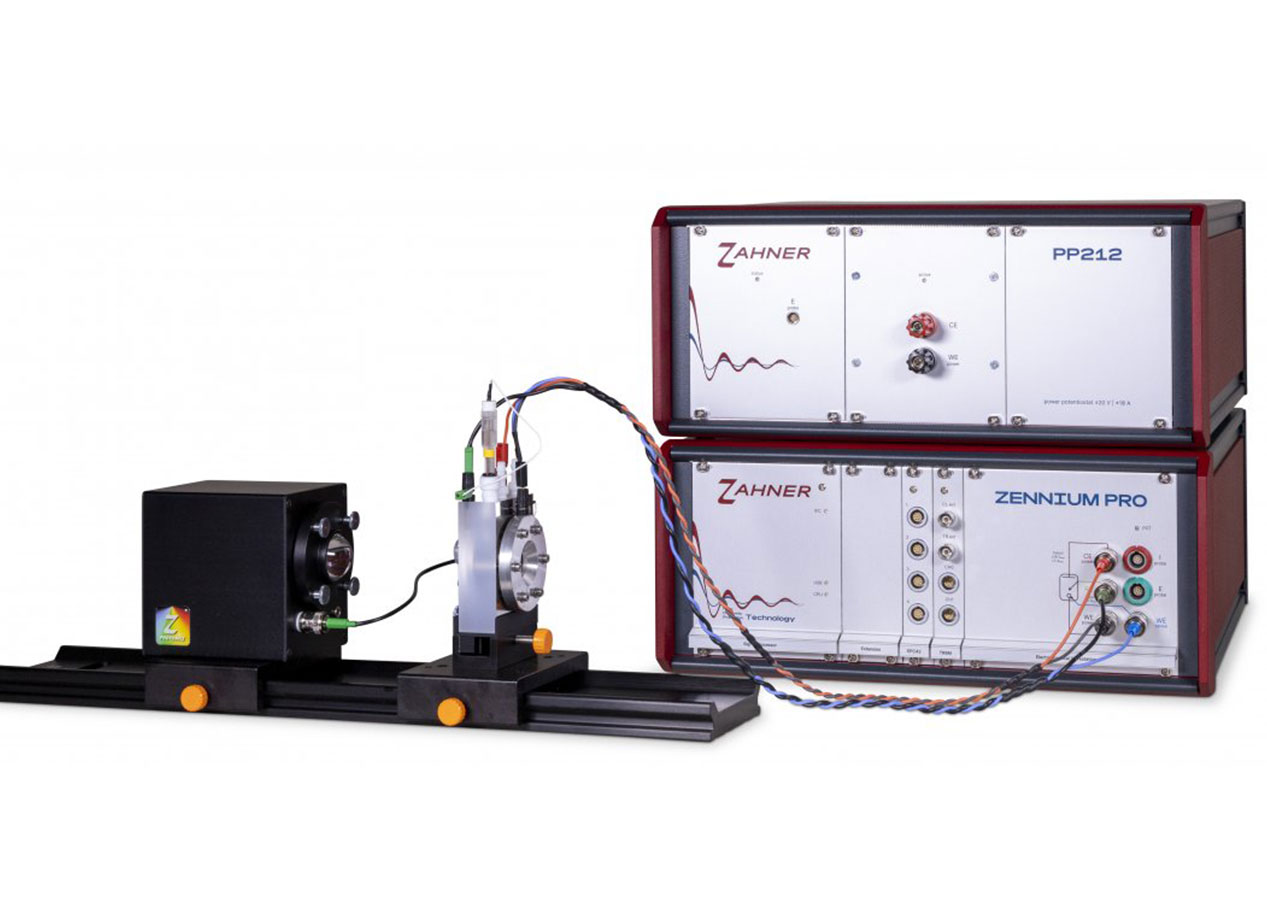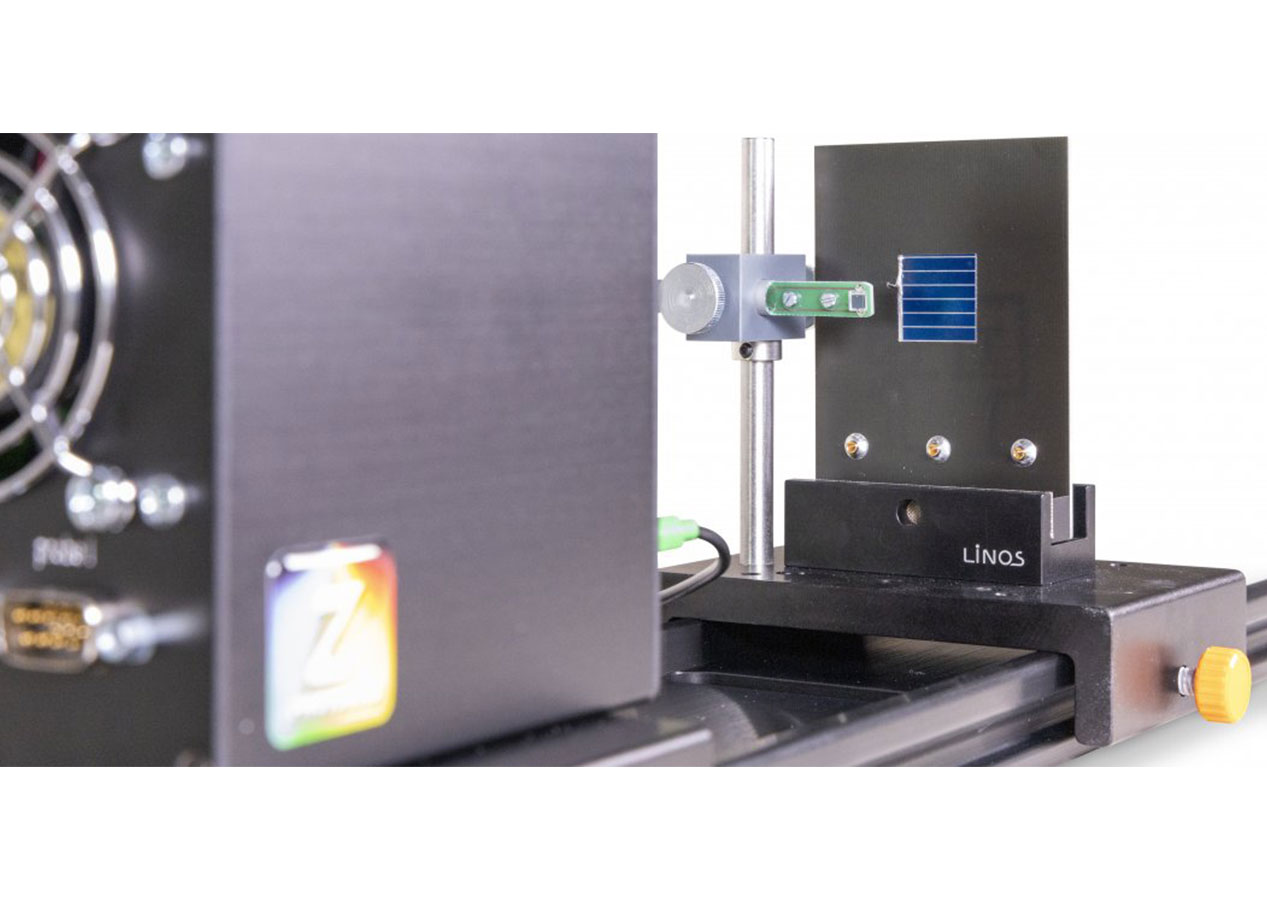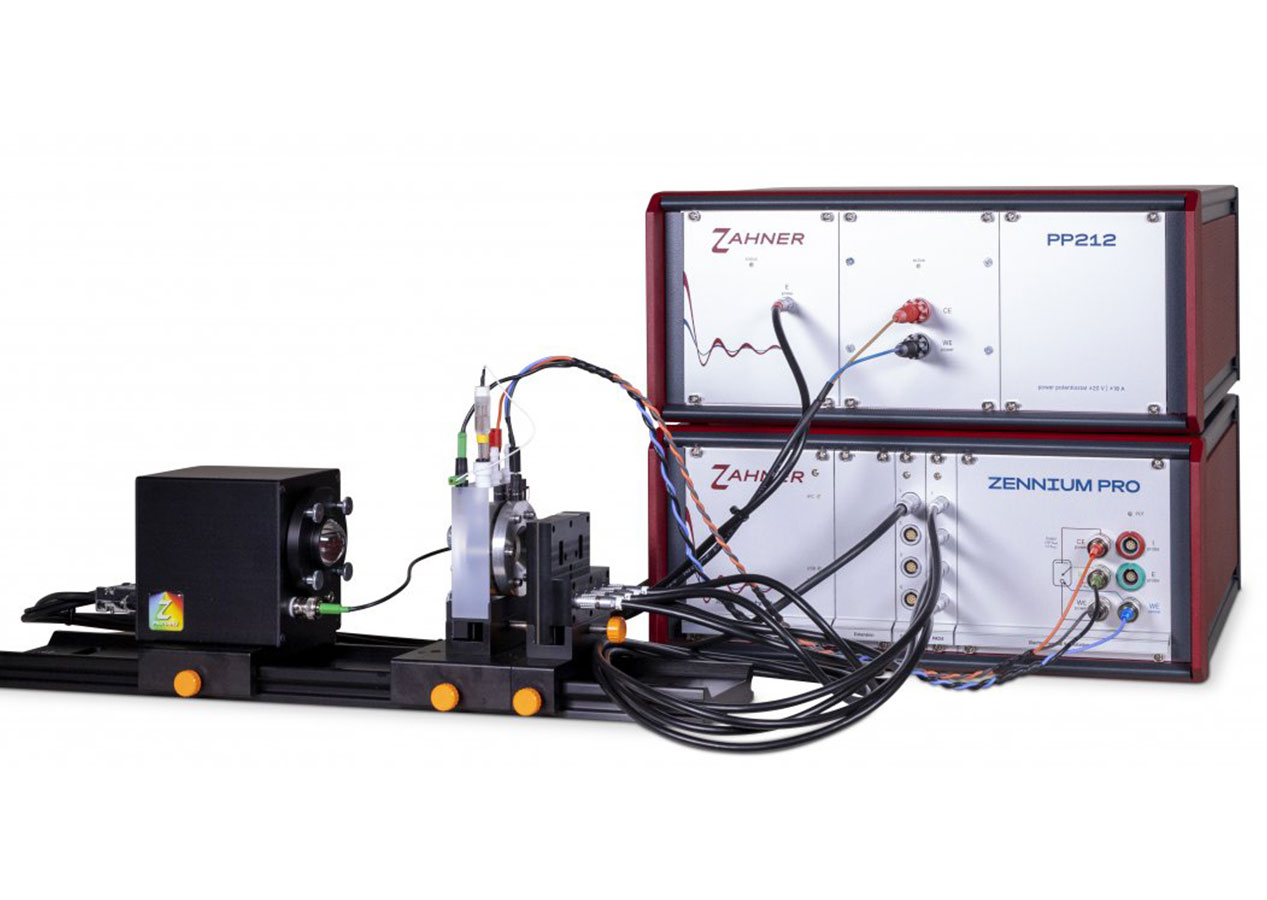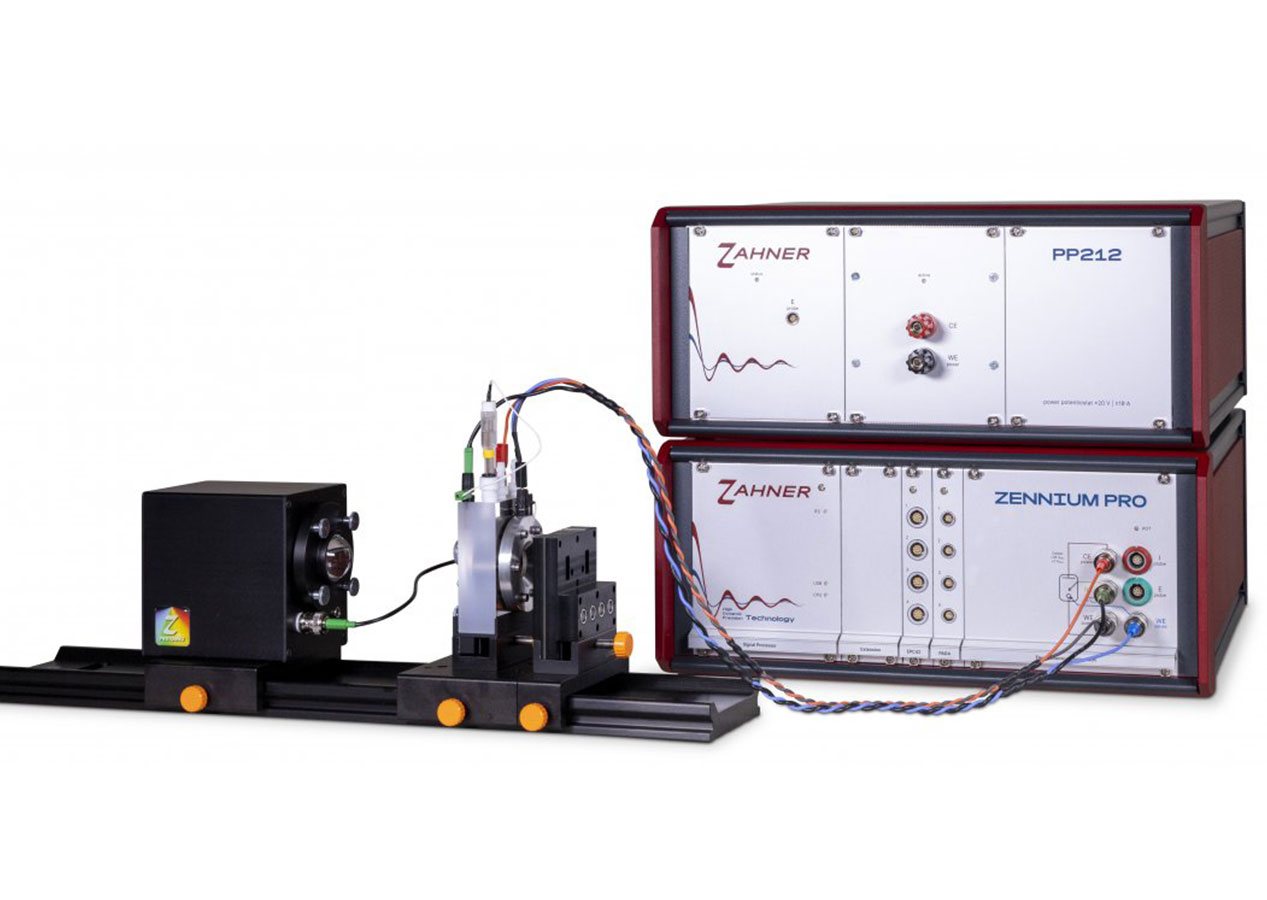CIMPS system
Photoelectrochemistry & PhotovoltaicThe CIMPS system is an advanced system for photoelectrochemical/photovoltaics measurements. An additional potentiostat actively controls the light source which allows dynamic measurements like IMPS, IMVS besides standard electrochemical and photoelectrochemical measurements.
Models
Photovoltaic / Photoelectrochemical system
Zahner's CIMPS is a highly dynamic LED-based system with an active light feedback loop that ensures a controlled and constant light intensity during the photoelectrochemical or photovoltaic measurements. Fast light sources enable dynamic photoelectrochemical measurements like IMPS/IMVS. The robust control of light intensity allows accurate IMPS/IMVS measurements, giving the system its iconic name "controlled intensity-modulated photo spectroscopy (CIMPS)". Further information on our light feedback loop and its benefits is provided in the manuscript "C in CIMPS". Besides standard electrochemical measurements, a list of the standard photoelectrochemical or photovoltaic measurements is provided below.
- Intensity modulated photocurrent spectroscopy (IMPS)
- Intensity modulated photovoltage spectroscopy (IMVS)
- Light transient measurement
- Chopped light voltammetry
CIMPS-QE/IPCE is an extended CIMPS system with the capability to measure quantum efficiency (QE) or incident photon to current efficiency (IPCE). The CIMPS-QE/IPCE extension consists of an easily mountable and portable tuneable light source (TLS). The TLS contains dynamic LEDs, a monochromator and a feedback control which allow accurate light illumination during the measurements without any warm-up time.
Multiple LEDs in the TLS provide higher light intensity across the broad wavelength range and longer operational lifetime as compared to any traditional Xe-lamp. This high light intensity is crucial for IPCE measurements on DSSC, perovskites or organic solar cells or photoelectrodes.
Like the modular LEDs used in the CIMPS system, the TLS is also able to carry out sine-wave modulation for IPCE measurements and does not require a mechanical chopper. During IPCE measurements, a special indicator is also provided which indicates if the measurement parameters are optimum for IPCE measurement or not. Further information about IPCE measurement is provided in our application note CIMPS-IPCE.
Zahner offers TLS with two different wavelength ranges.
- TLS03: 365 nm - 1020 nm
- TLS03/UV: 290 nm - 1020 nm (with UV extension)
Spectral resolved emission measurement
CIMPS-EMIT allows integral and spectral resolved light emission measurements and can be used to characterize electroluminescent processes. For integral emission measurements, a NIST traceable calibrated photodetector is used whereas for spectral resolved measurements a UV-VIS-NIR spectrometer is used.
Like CIMPS-ABS, the emission spectrum can be measured for a different bias voltage or current, time, monitoring any other control parameter like temperature, pH, or concentration etc. The emission measurements can also be triggered manually.
CIMPS-EMIT is available in the following two configurations.
- CIMPS-EMIT1: For integral emission measurements only, recomended in combination with CIMPS-ABS
- CIMPS-EMIT2: For integral & spectral resolved emission measurements
Spectral resolved absorption/transmittance measurement
CIMPS-ABS allows spectral resolved transmittance / absorbance measurements to characterize electro-chromic processes. It can be used with an LED-emitter or tungsten lamp. The transmittance / absorbance spectrum can be measured for different bias voltages or currents, time, or any other control parameter like temperature, pH, or concentration etc.
In CIMPS-ABS, two PECC-2 cells are mounted and used sequentially. One PECC-2 cell is used as a reference whereas the other is used for measurement. The reference cell aids in mitigating the artefacts due to light loss via reflection or electrolyte absorption which in turn helps in accurately measuring the absorption spectrum.
- ABS-1: Beam diameter = 18 mm
- ABS-1: Wavelength range = 360 - 1000 nm
- ABS-2: Beam diameter = 600 µm
- ABS-2: Wavelength range = 215 - 1100 nm
Quantum efficiency measurement
CIMPS-PCS allows "quantum efficiency" (QE) or "incident photon to current efficiency (IPCE)" measurements for the characterization of photoelectrodes or solar cells. The CIMPS-PCS does not include a mechanical chopper and the IPCE measurements are not carried out via noise-prone Lock-In techniques but are carried out via intensity-modulated photocurrent spectroscopy. The LEDs based tuneable light source (TLS) used in CIMPS-PCS is available for a wide wavelength range (with and without UV extension). A feedback sensor is incorporated in the TLS which ensures illumination with the correct light intensity.
An additional constant white background light is also incorporated in the TLS which allows IPCE measurements for the solar cells with high light intensity threshold for photocurrent. The effect of the constant white light is removed from the IPCE measurements.
The CIMPS-QE/IPCE system can be used for all standard electrochemical or photoelectrochemical measurements which are possible with the CIMPS.
Fast intensity transient measurement
CIMPS-FIT allows fast light intensity transient measurements to investigate the fast kinetics in organic, dye-sensitized, monolithic solar cells and photoelectrodes. With CIMPS-FIT, charge migration and diffusion time constants can be measured with a resolution of 50 ns.
CIMPS-FIT uses Zahner's TR8M addon card for transient measurements. The CIMPS-FIT can be used with the monochromatic LEDs from the CIMPS system or the TLS from CIMPS-PCS. With monochromatic LED a time resolution down to 50 ns whereas, with TLS, a time resolution down to 100 ns is possible.
CIMPS-FIT upgrade contains
- TR8M transient recorder (up to 20 MHz sampling rate)
- CIMPS-FIT software
Dynamic multi-spectral transmittance measurement
In CIMPS-MTDR/OIS, MTDR stands for "Multi-spectral Dynamic TRanmittance" and OIS stands for "Optical Impedance Spectroscopy". Like in EIS, in CIMPS-MTDR/OIS a small voltage or current perturbation is applied and a corresponding change in the optical properties is measured. For example in a smart window, applying voltage may change its transparency. With optical impedance spectroscopy, the color switching time or reaction time to perturbation can be determined. With this, the switching time can also be linked to the undergoing transport or redox processes.
The CIMPS-MTDR/OIS is equipped with four calibrated sensors (one for UV, one for IR range and two for visible light range) and can be used for characterizing the test objects in the broad wavelength range.
With CIMPS-MTDR/OIS, kinetic information may be unequivocally assigned to certain color species in a reaction chain.
Contact
| 01 69 19 49 49 | |
| Write e-mail |

Navigation
Categories
Contact
Quantum Design SAS
Avenue de l’Atlantique
Bâtiment Fuji Yama
91940 Les Ulis
France
| Phone: | +33 1 69 19 49 49 |
| E-mail: | franceqd-europe.com |


